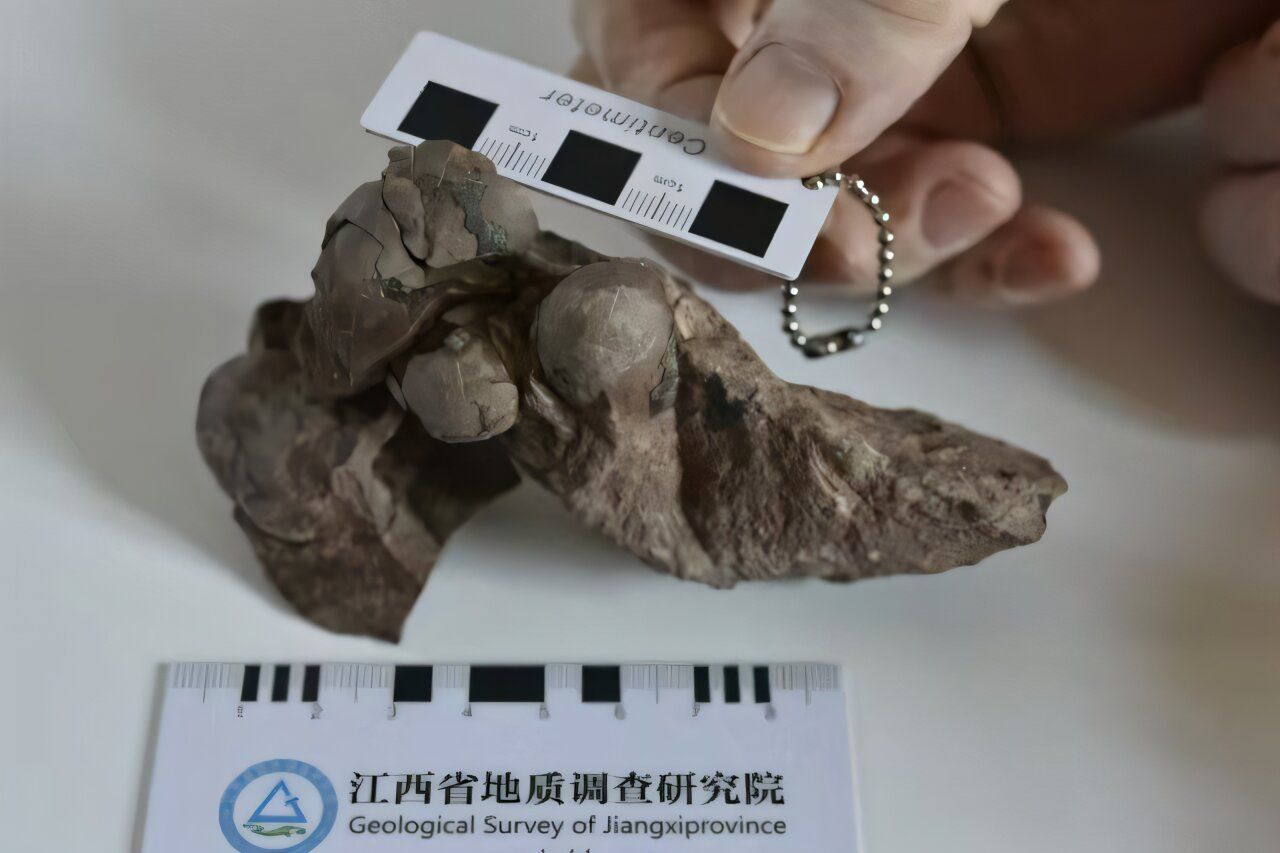This dinosaur egg is the smallest ever discovered 🦖
Published by Cédric,
Article author: Cédric DEPOND
Source: Historical Biology
Other Languages: FR, DE, ES, PT
Article author: Cédric DEPOND
Source: Historical Biology
Other Languages: FR, DE, ES, PT
Follow us on Google News (click on ☆)
This fossil, unearthed in China alongside several other eggs, is the subject of careful scrutiny. Dated to 80 million years ago, the egg measures only 1.14 inches (29 millimeters), breaking the previous record. This feat has caught the attention of paleontologists worldwide.

This photo shows a new type of dinosaur egg fossils discovered in the city of Ganzhou, in Jiangxi province, eastern China.
Credit: China University of Geosciences (Wuhan)
The egg found in Ganzhou was analyzed for three years. This study not only revealed its age, but also a new species. Named Minioolithus ganzhouensis, this species is still shrouded in mystery regarding its exact characteristics.
The egg is far more than just a curiosity. Its analysis could offer clues about the reproductive behaviors of theropods. The small size of the egg, though modest, does not necessarily indicate the size of the adult dinosaur. This paradox raises questions about the diversity of species in the Cretaceous.
Indeed, the region of Ganzhou proves to be a true paleontological treasure. The carefully preserved sedimentary layers bear witness to the existence of rich biodiversity. Paleontologists anticipate that further discoveries could follow, deepening our understanding of prehistoric life.
The development of advanced technologies, such as tomography, allows the secrets of this egg to be explored without destroying it. This modern approach could reveal details about the embryos and the habitats of the dinosaurs of that time.
The implications of this discovery are numerous. It challenges preconceived notions about small dinosaur species. It could prompt new research in similar sites.
The reactions from the scientific community underline the importance of this discovery. Researchers express their excitement, considering this egg a milestone in modern paleontological research. Additional excavations are expected, with the hope of uncovering more revealing fossils.
What is a theropod?
The term theropod refers to a group of bipedal carnivorous dinosaurs, including famous species such as Tyrannosaurus rex and Velociraptor. Appearing around 230 million years ago, theropods were characterized by their strong hind legs, sharp claws, and carnivorous diet, although some evolved towards omnivorous or herbivorous diets.
Theropods are particularly known for their evolutionary link to birds. Some species, notably smaller theropods like dromaeosaurids, developed feathers and had bone structures similar to those of modern birds. This group is now widely accepted as the ancestors of birds, marking a transition in animal evolution.